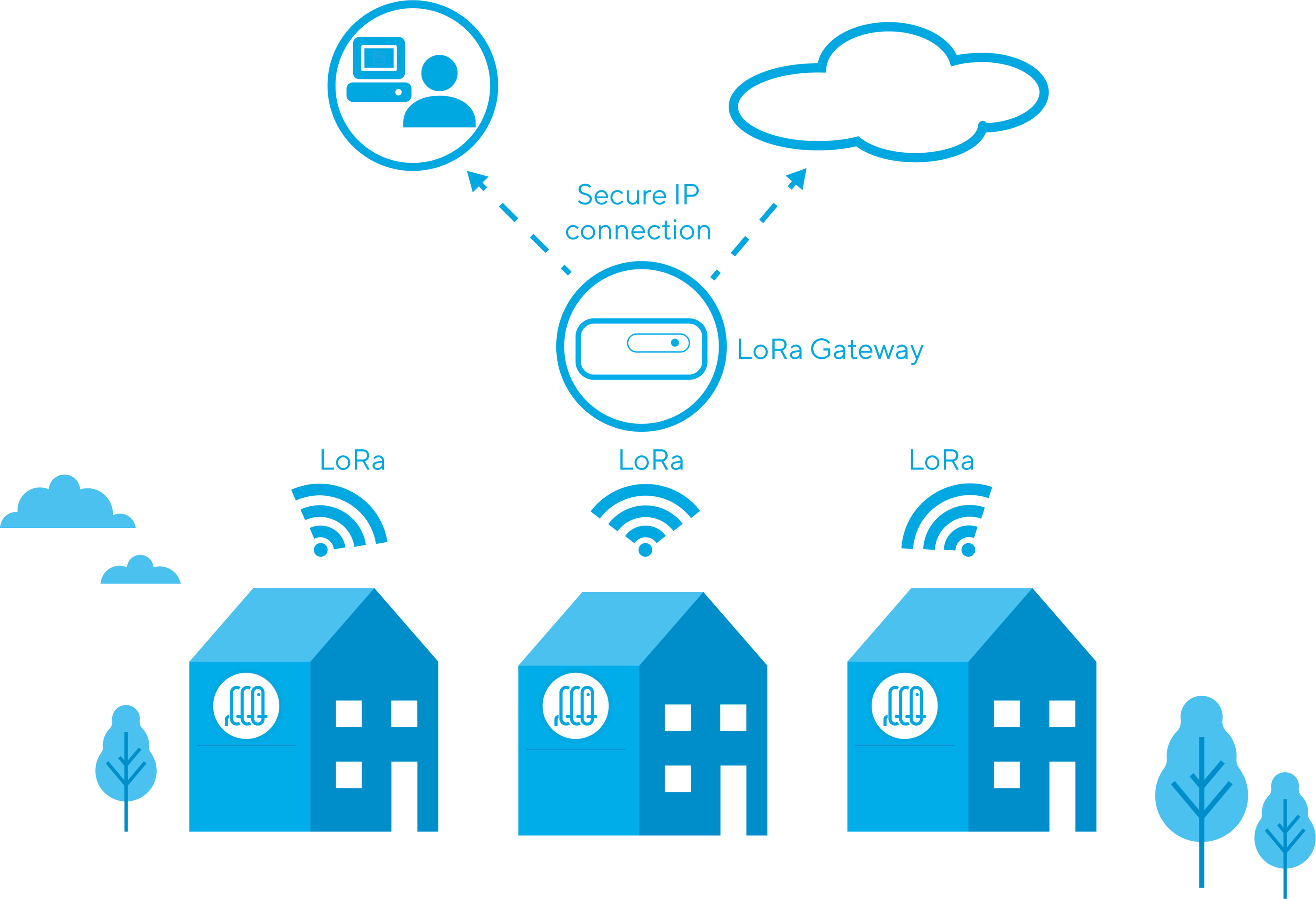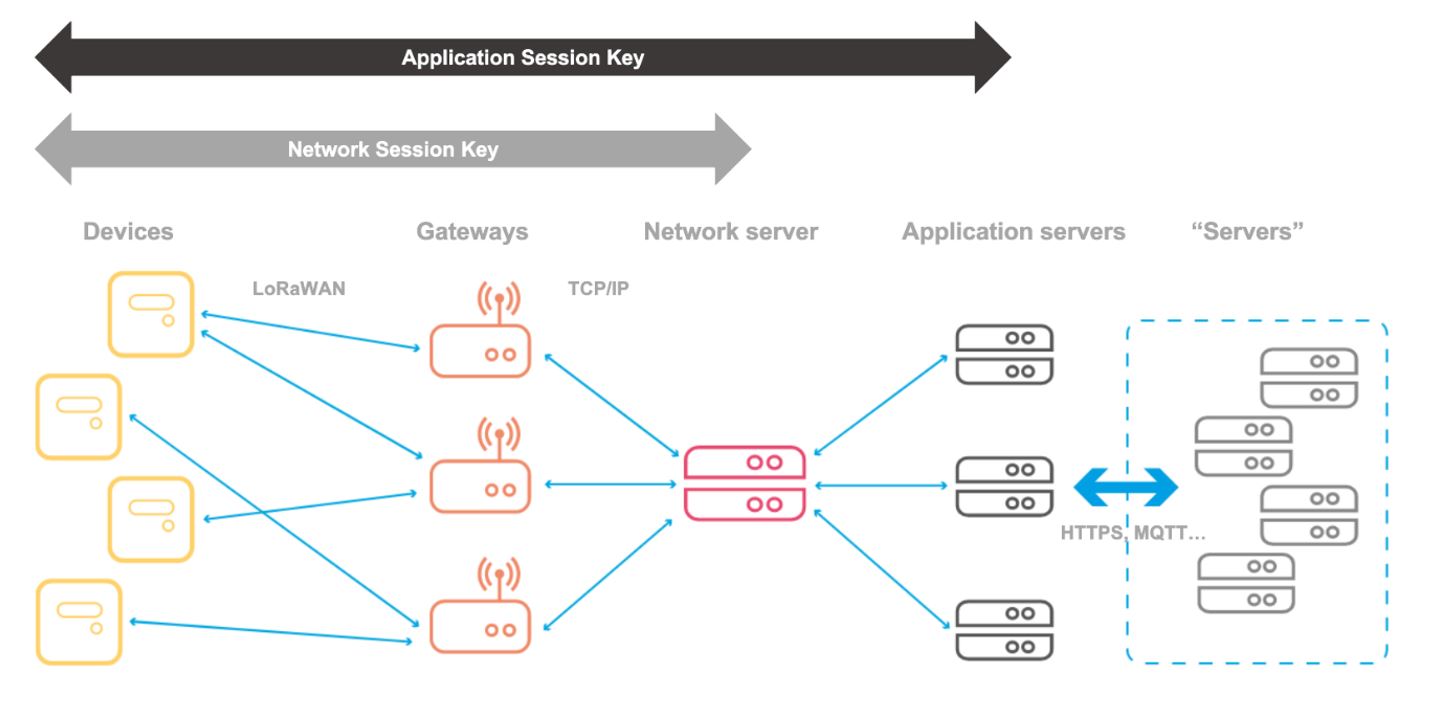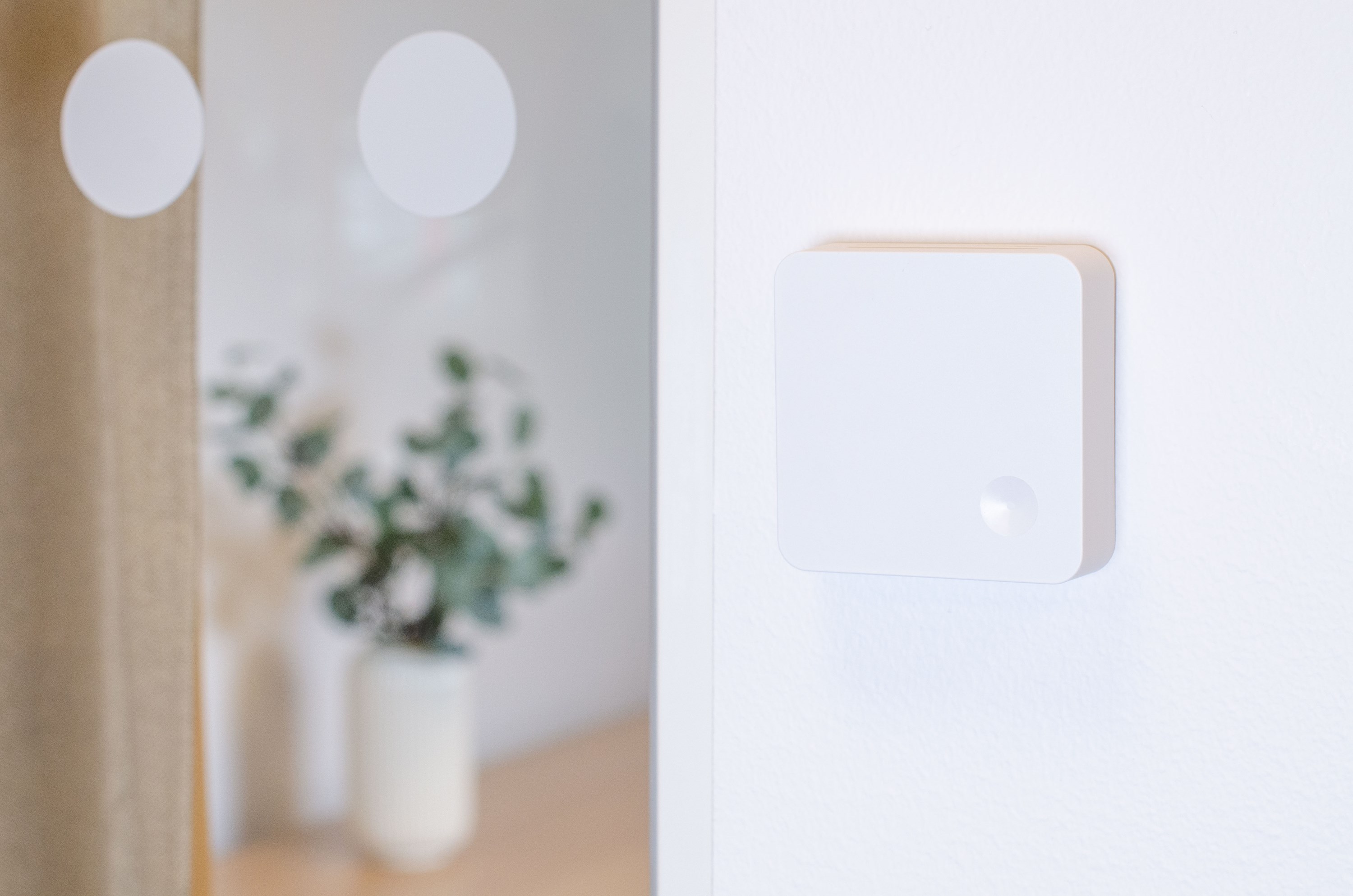LoRaWAN
LoRaWAN
LoRaWAN is a wireless transmission technology based on open standards. It has been specially designed and optimized for applications such as intelligent parking systems, smart city infrastructures, efficient waste management and smart metering.
An extremely useful use case for LoRaWAN is its use in temperature sensors. Thanks to their special properties, these sensors offer considerable added value. In particular, the battery-operated LoRaWAN sensors are extremely energy-efficient, enable a long wireless range and can be operated cost-effectively and securely (end-to-end encryption).
Given the rapid growth of digitalization and the Internet of Things (IoT), new communication technologies such as LoRaWAN are required. The IoT connects different types of devices to simplify the functions of daily life. In order to meet these requirements, new communication technologies must have a long range and energy efficiency.

Standard and compatibility
LoRaWAN refers to the open standard managed by the LoRa Alliance. The communication takes place via LoRa radio technology and includes all aspects of the solution - from the Iso-Osi layers to the receiving server architecture - are defined by LoRaWAN. This also includes end-to-end security or end-to-end encryption.
There is no uniform definition for the format of the meter and sensor data, as this depends on the respective provider. It is therefore unclear whether this data will be made publicly available or not. While this allows for some creativity when using limited amounts of data, it can also be challenging for the integrating system. Because different LoRaWAN devices can encode their data in different ways, a consistent approach is difficult.

Technical performance
LoRaWAN and NB-IoT often compete for the title of "best IoT wireless technology", but it's not just about one winner. Rather, it is about which ecosystem to invest in and how the infrastructure should be managed. NB-IoT is managed by mobile operators that offer certain service levels but depend on their geographic coverage. In contrast, LoRaWAN also has service providers, but also the possibility to build your own network infrastructure. The expansion of a LoRaWAN network is also cost-effective.
As with all wireless technologies that use unlicensed frequency bands, there is the possibility of interference from other radios. Because every broadcaster competes for the same resource when transmitting: "Airtime". This is because the signal between transmitter and receiver is attenuated by physical objects. However, compared to other wireless solutions, LoRaWAN offers enormous range and a strong ability to penetrate physical obstacles.
In case of radio interference, the messages from meters or sensors are usually lost and cannot be recovered. In contrast, LoRaWAN devices typically send fewer messages per unit of time than Wireless M-Bus but offer higher reliability per message as well as the ability to acknowledge receipt.
In addition to higher reliability, LoRaWAN systems also offer better scalability. This is achieved through the use of the Adaptive Data Rate (ADR) mechanism. Here, meters and sensors in the vicinity of a receiver (gateway) optimize their communication scheme to ensure the best possible transmission interval while conserving the battery.
In order to make optimal use of long-range communication with LoRaWAN, data messages should be kept very short. However, this results in a lower bandwidth. Nevertheless, LoRaWAN devices offer excellent battery performance and can achieve a lifespan of over 10 years when using a single AA cell. However, for applications that require long battery life, the solution is typically limited to a few messages per day. In addition, the distance between transmitter and receiver should be kept within the maximum range of a LoRaWAN device.
Although firmware upgrades are now part of the standard and LoRaWAN enables bidirectional communication, these systems are mainly considered "one-way" systems. This means that downlink communication (from server to device) is limited. For larger amounts of data such as firmware updates, this can be a complex task.
Suitable applications
LoRaWAN is particularly suitable for battery-powered sensors with low resolution and simple measuring instruments. Compared to Wireless M-Bus, in many cases it can be considered a similar but improved wireless solution. However, it is important to note that LoRaWAN has a different ecosystem with specific infrastructure requirements. It is more dependent on supporting cloud services than wireless M-Bus.
From indoor sensors to internal meter connectivity modules - products for LoRaWAN
Building an efficient IoT network using LoRaWAN technology requires specialized solutions ranging from sensors and communication modules to gateways and LoRaWAN network management. These products and devices have been specifically developed to meet the high requirements for energy efficiency and range. By using these solutions, battery-powered sensors can be read remotely with just a few gateways, resulting in process optimization and operational cost savings.
An important part of the LoRaWAN ecosystem are sensors and meter modules, which can also be retrofitted. In addition, there is a wide range of accessories such as magnetic antennas. These products have been specially developed to meet the high requirements for energy efficiency and range. Smart buildings are equipped with LoRaWAN sensors to perform high-precision measurements of temperature, humidity and other values. The data collected via the LoRaWAN infrastructure can be used for effective energy management and improvement of the indoor climate.
To increase the range and improve the signal strength, external magnetic mount antennas are used. Depending on the application, the LoRaWAN sensors are designed for indoor or outdoor mounting.
The great potential of LoRaWAN sensors for smart building management
In addition to energy management, the open LoRaWAN standard can also be used to collect other relevant data in an intelligent building. The smart LoRaWAN sensors are able to record motion, heat, noise, distance and air composition data and transmit it to the central building management system. Based on this information, internal building processes can be optimized. For example, the CO2 content of the indoor air can be measured to improve ventilation behaviour.
LoRaWAN CO2 Sensor
In today's world, precise measurement and monitoring of air quality is indispensable for many applications. It is of great importance to have effective and reliable CO2 sensors for indoor use. The CO2 sensor, which is compatible with LoRaWAN, is therefore enjoying great popularity and demand.

To ensure reliable data transmission for remote monitoring applications, this type of sensor uses end-to-end encryption, to communicate wirelessly with a compatible gateway and transmit data over long distances. For this reason, this sensor is particularly suitable for remote monitoring applications that require stable and reliable transmission of data.
Another advantage of this sensor is that it has a low power consumption. This makes it an energy-efficient option for applications where long battery life is important. For example, our LoRaWAN sensors can be operated for up to 10 years without interference.
The technology is perfect for applications where wireless data transmission over long distances is required. Therefore, it is ideally suited for use in remote locations where there is no direct line of sight.
Compared to conventional methods for measuring air quality, LoRaWAN-capable CO2 sensors provide extremely precise readings. For this reason, they are particularly suitable for applications where accurate and reliable data is important, such as air quality monitoring in industrial areas, public facilities, schools or offices.
When it comes to monitoring and optimizing air quality, CO2 sensors with LoRaWAN capability are a highly reliable choice. These sensors can provide accurate measurements under various conditions, even at high temperatures and humidity. Therefore, they are ideal for applications where reliability is of great importance.
CO2 sensors are particularly useful for monitoring air quality in commercial and industrial buildings. Human safety is key, and it is essential that dangerous levels of carbon monoxide and carbon dioxide in the air are avoided. The sensor can also be used to measure humidity, temperature and other important air quality parameters. By monitoring these parameters, potential hazards can be identified at an early stage and measures can be taken to improve air quality and ensure safety.
There are numerous applications for CO2 sensors that go beyond conventional applications in industry and commercial buildings. They can also be used on roads or in private households to provide early warning of potential hazards. Thanks to its outstanding accuracy and reliability, the LoRaWAN-compatible CO2 sensor is an extremely popular choice for air quality monitoring.
Elvaco – all LoRaWAN devices in one place
Elvaco is the ideal partner when it comes to LoRaWAN technology, which plays a crucial role in the implementation of the Internet of Things (IoT). Our range includes a wide range of high-precision, energy-efficient and environmentally friendly sensors and meter modules with LoRaWAN compatibility. We have everything you need to take full advantage of this technology.
If you are interested in products from our extensive range, do not hesitate and contact the team of experts from Elvaco. We are happy to assist you with our expertise in the field of LoRaWAN technology and support you with your concerns. We look forward to helping you!

FAQ:
What is the difference between LoRa and LoRaWAN?
LoRa is a wireless technology developed by Semtech that enables low-power and long-range data transmission. This is used exclusively between transmitters (sensors) and gateway.
LoRaWAN, on the other hand, describes the entire network structure and the communication of the individual components within the network. It ensures that any LoRaWAN-enabled device can be seamlessly integrated into an existing network.
What are LoRaWAN sensors:
Sensors with LoRa or LoRaWAN technology are able to communicate wirelessly with other devices or networks and are therefore referred to as LoRaWAN sensors. They offer the advantage of transmitting data over long distances with low energy consumption.
What do I need for LoRaWAN?
To build a LoRaWAN network, you need gateways that receive the network signal from LoRaWAN sensors and forward it to a network server. Here it is then possible to visualize the data or adapt it for a special system to process the data.
LoRaWAN sensors are known for their ability to transmit data over long distances. At the same time, they are characterized by high energy efficiency and durability.


 Subscribe to our newsletter
Subscribe to our newsletter